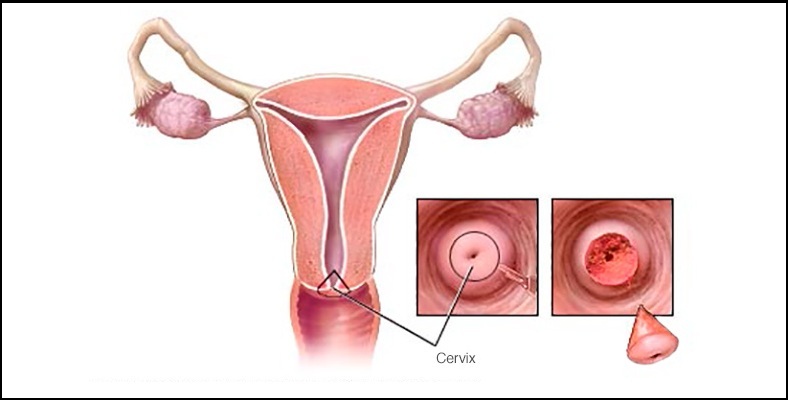
Cervical Biopsy
- Description
- Faq's
What is a cervical biopsy?
A cervical biopsy is a surgical procedure in which a small amount of tissue is removed from the cervix. The cervix is the lower, narrow end of the uterus located at the end of the vagina.
A cervical biopsy is usually done after an abnormality has been found during a routine pelvic exam or Pap smear. Abnormalities can include the presence of the human papillomavirus (HPV), or cells that are precancerous. Certain types of HPV can put you at risk for developing cervical cancer.A cervical biopsy can find precancerous cells and cervical cancer. Your doctor or gynecologist may also perform a cervical biopsy to diagnose or treat certain conditions, including genital warts or polyps (noncancerous growths) on the cervix.Types of cervical biopsies
Three different methods are used to remove tissue from your cervix:
- Punch biopsy: In this method, small pieces of tissue are taken from the cervix with an instrument called “biopsy forceps.” Your cervix might be stained with a dye to make it easier for your doctor to see any abnormalities.
- Cone biopsy: This surgery uses a scalpel or laser to remove large, cone-shaped pieces of tissue from the cervix. You’ll be given a general anesthetic that will put you to sleep.
- Endocervical curettage (ECC): During this procedure, cells are removed from the endocervical canal (the area between the uterus and vagina). This is done with a hand-held instrument called a “curette.” It has a tip shaped like a small scoop or hook.
The type of procedure used will depend on the reason for your biopsy and your medical history.
How to prepare for a cervical biopsy
Schedule your cervical biopsy for the week after your period. This will make it easier for your doctor to get a clean sample. You should also make sure to discuss any medication you take with your doctor.
You may be asked to stop taking medications that could increase your risk of bleeding, such as:- aspirin
- ibuprofen
- naproxen
- warfarin
Avoid using tampons, douches, or medicated vaginal creams for at least 24 hours before your biopsy. You should also avoid having sexual intercourse during this time.
If you’re undergoing a cone biopsy or another type of cervical biopsy that requires a general anesthetic, you’ll need to stop eating at least eight hours before the procedure. On the day of your appointment, your doctor might suggest you take acetaminophen (such as Tylenol) or another pain reliever before you come to their office. You may experience some light bleeding after the procedure, so you should pack some feminine pads. It’s also a good idea to bring a family member or friend along so they can to drive you home, especially if you’re given general anesthesia. General anesthesia may make you drowsy after the procedure, so you shouldn’t drive until the effects have worn off.